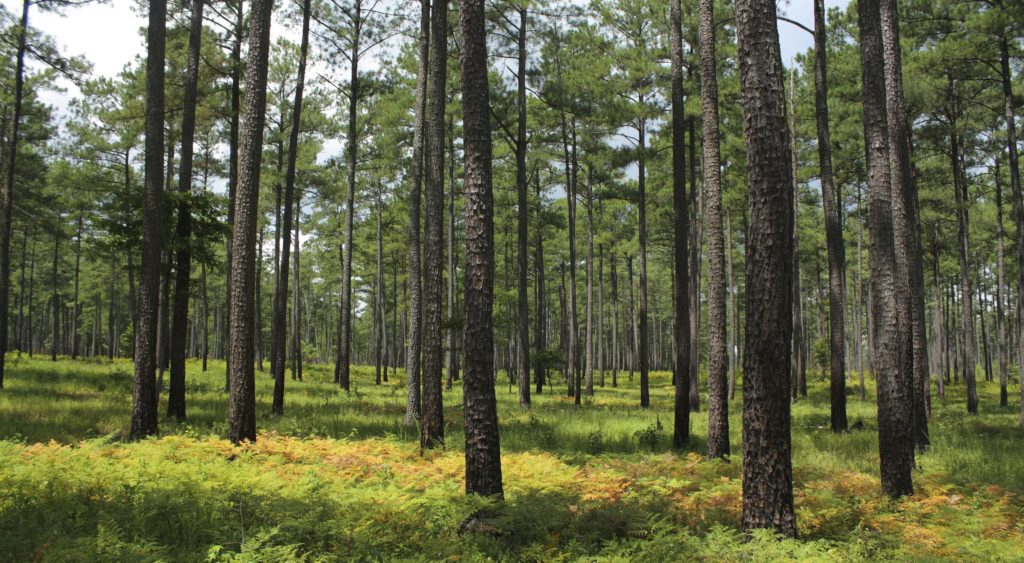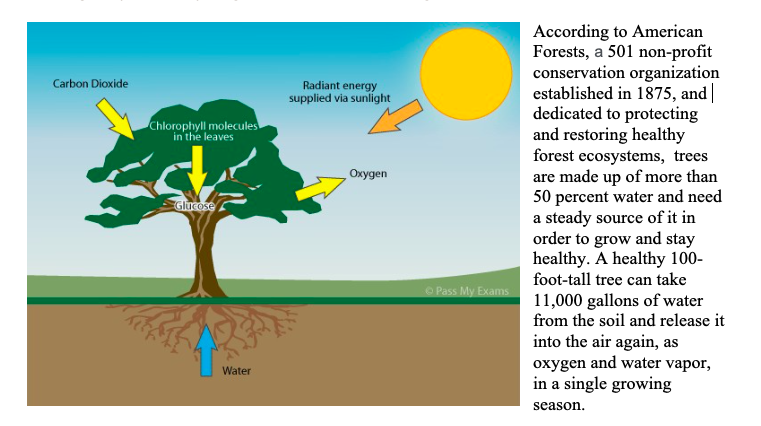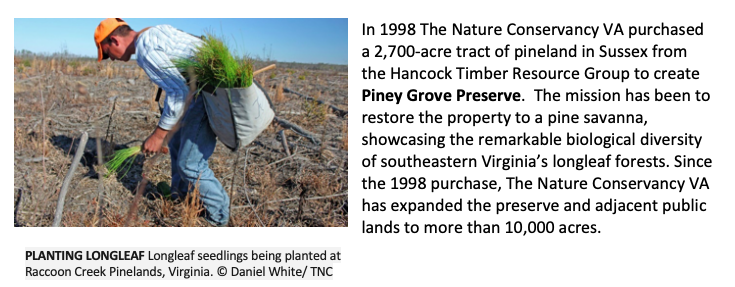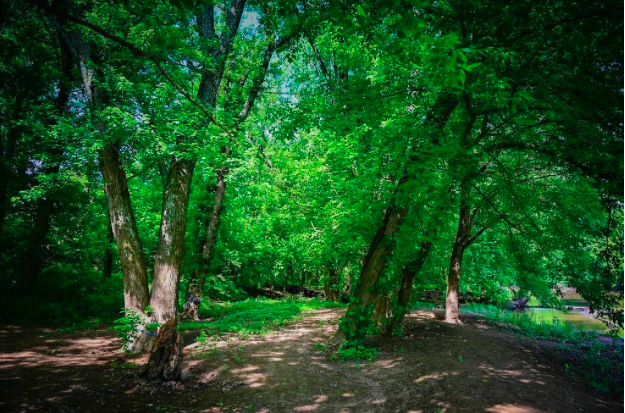You Can Help Restore Virginia’s “Founding Forest”
FBRM Invitation to our Readers
 The best time to plant a tree is twenty years ago.
The best time to plant a tree is twenty years ago.
The second-best time is now.
Taking these words to heart, Friends of the Blue Ridge Mountains — working with The Nature Conservancy VA – is planting 600 longleaf pines to help restore Virginia’s “Founding Forest.”
We invite you to join us; FBRM will match any tree donations you make to The Nature Conservancy VA– specifics below.
Why Trees?
Trees are a big part of the solution to many problems. Trees clean the air. According to The Nature Conservancy, trees are the most efficient consumers of carbon dioxide on the planet. As trees grow, the leaves pull carbon dioxide and water from the atmosphere and use the energy of the sun to convert this into chemical compounds such as sugars that feed the tree. As a by-product of that chemical reaction oxygen is produced and released by the tree.
One acre of trees pulls about six tons of carbon dioxide from the atmosphere each year. That is important because excess carbon dioxide contributes significantly to the greenhouse effect as a result of which the planet is growing warmer each year.
On average each American generates about two tons of carbon dioxide per month. According to The Nature Conservancy, that means that each year, it takes 4-5 acres of trees to offset the carbon pollution from a single American.
Not only are trees removing the excess carbon dioxide that we each generate daily – and which is gradually heating our planet — trees produce the oxygen we need to live moment to moment.
A single mature tree will produce enough oxygen to support two human beings. According to an article by Dr. Anne Marie Helmenstine published by ThoughtCo, on average, one tree produces nearly 260 pounds of oxygen each year. Two mature trees can provide enough oxygen for a family of four.
OK – so trees produce the oxygen we breathe and clean the air of the carbon dioxide that is warming the planet. Anything else? How about cleaning the water?
According to American Forests, a 501 non-profit conservation organization established in 1875, and dedicated to protecting and restoring healthy forest ecosystems, trees are made up of more than 50 percent water and need a steady source of it in order to grow and stay healthy. A healthy 100-foot-tall tree can take 11,000 gallons of water from the soil and release it into the air again, as oxygen and water vapor, in a single growing season.
Trees are natural sponges, collecting and filtering rainfall and releasing it slowly into streams and rivers, and are the most effective land cover for maintenance of water quality.
The ability of forests to aid in the filtration of water benefits our health and our pocketbooks. Forest cover is directly linked to drinking water treatment costs. The more forest cover in a water watershed, the lower the cost of water treatment.
American Forests says that forests in the United States are the source of drinking water for more than 180 million people, 59 percent of the U.S. population.
Of course, the appeal of trees and forest cover is not limited to our left brain. Trees and forests have inspired poets, and artists of all kinds to the heights of creativity for thousands of years. Mental health professionals are beginning to recognize the stress-reducing benefits of a simple walk in the woods.
The Problem
We are fortunate in this area. We can all walk, drive, hike and ride bikes and horses around, in and through the beautiful Blue Ridge Mountains and be pretty comfortable that the deep forests at our door will be with us forever, producing oxygen; cleaning our air and our water.
Looks are deceiving.
Without careful management our forests are no more secure then the vast herd of buffalo that roamed the American prairies a few short generations ago or the flocks of passenger pigeons so thick they plotted out the sun for hours as recently as the 1860s.
According to the Virginia Department of Forestry, Virginia loses more than 16,000 acres of forest each year, mainly through conversion to home sites, shopping centers, roads, and other development. Rapid population growth places a demand on our shrinking forestland base. According to the Department of Forestry web site:
Urbanization and development are the biggest factors in loss of forestland acreage. Since 2001, 484,965 acres of forested land has been lost to land use changes; 64% of this acreage were cleared for urban development.
The problem is not limited to Virginia. Nationally our forested areas are shrinking at an alarming rate. The U.S. Forest Service estimates that more than 40 million acres of private forest could be lost in the next 40 years.
What is Friends of the Blue Ridge Mountains doing?
Concern for our shrinking forest cover has been an issue for Friends for years. Four years ago, Friends mailed to every address in the Blue Ridge area a brochure produced by the Virginia Department of Forestry. The brochure described state financial programs to encourage and assist landowners in adding tree cover to their property. According to the Department of Forestry private individuals own more than 66% of Virginia’s timberland. Detailed information about the programs of financial assistance to conserve, manage, and protect forest resources is available online at the Department’s web site.
Within the past several weeks Friends has taken another step to address the issue. We have sent a donation to The Nature Conservancy VA to plant 600 longleaf pine trees in Sussex County, Virginia.
In 1998 The Nature Conservancy VA purchased a 2,700-acre tract of pineland in Sussex from the Hancock Timber Resource Group to create Piney Grove Preserve. The mission has been to restore the property to a pine savanna, showcasing the remarkable biological diversity of southeastern Virginia’s longleaf forests. Since the 1998 purchase, The Nature Conservancy VA has expanded the preserve and adjacent public lands to more than 10,000 acres.
The Nature Conservancy VA carefully and deliberately chose the longleaf pine as the tree of choice for the Piney Grove Preserve for its environmental benefit and food and shelter for wildlife.
This sprawling longleaf forest, which helped found the Virginia colony, was harvested to near extinction by 1893. In 2005, a sliver of just 200 native trees remained in Virginia.
The longleaf pine restoration program has established $0.90 as the per unit cost for planting a longleaf seedling. The amount covers site preparation, seedling purchase, seedling planting and a portion of post-planting fire management expenses.
The Nature Conservancy VA long leaf pine project is a part of a much larger worldwide initiative of The Nature Conservancy to plant one billion trees by 2025. Other prominent conservation groups have similar programs. The National Forest Foundation has a program to plant 50 million trees by 2023 and the Arbor Day Foundation has a program to plant a 100 million trees by 2022.
Friends invites YOU to also donate to The Nature Conservancy VA longleaf pine project for less than a dollar a planted tree.
ONE DOLLAR = ONE TREE PLANTED
Friends will match on a tree-per-tree basis any donation that our readers make up to a maximum total of 1,000 trees. Simply donate here and choose “Plant a Tree Program”. Friends will forward your donation, matching it up to 1,000 trees, to The Nature Conservancy VA.




Leave a Reply
Your email is safe with us.